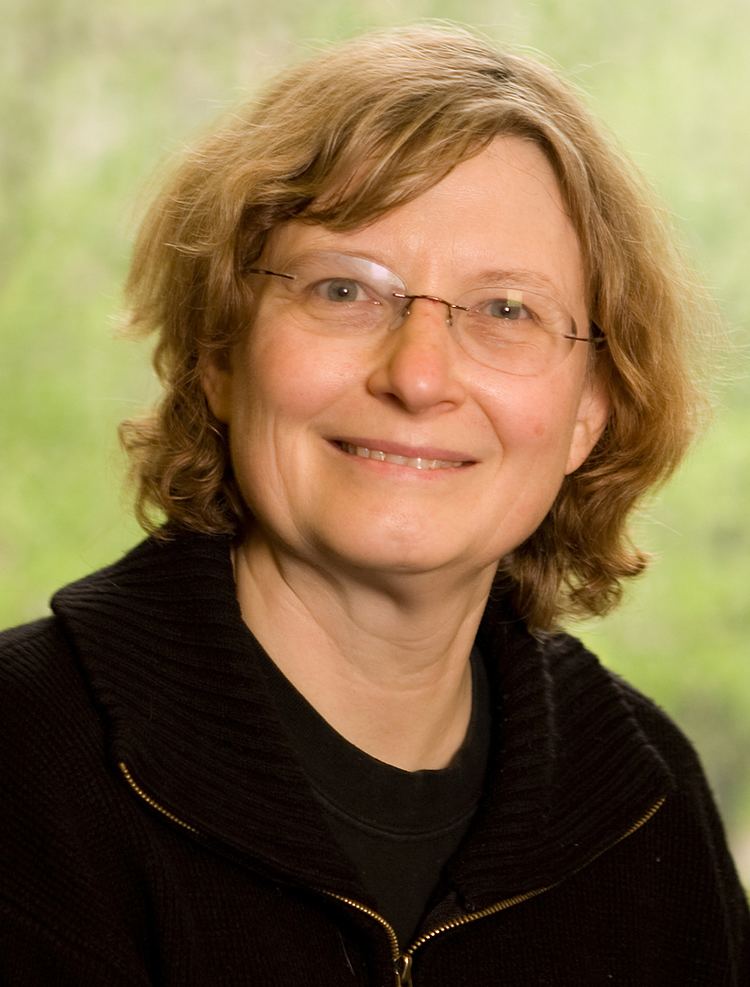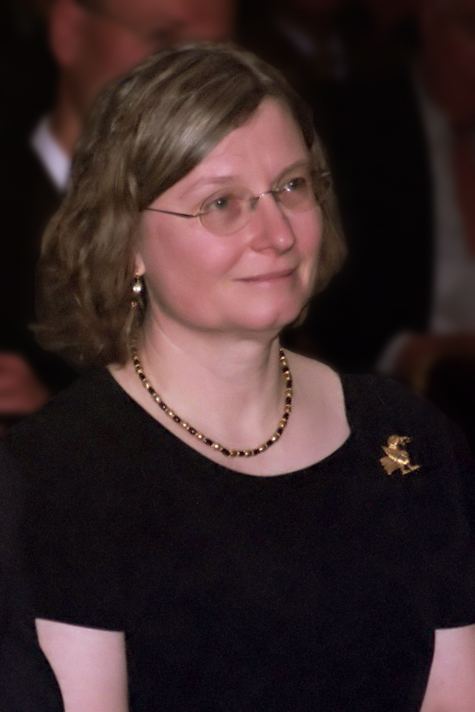Name Ingrid Daubechies Books Ten Lectures on Wavelets | Known for Wavelet | |
 | ||
Fields MathematicianPhysicist Institutions Duke UniversityPrinceton University Doctoral students Anna GilbertOzgur YilmazRachel Ward Notable awards Noether Lecturer (2006)NAS Award in Mathematics (2000)Nemmers Prize in Mathematics (2012)MacArthur FellowshipBBVA Foundation Frontiers of Knowledge AwardLeroy P. Steele Prize (2011) Awards Noether Lecture, MacArthur Fellowship, Guggenheim Fellowship for Natural Sciences, US & Canada | ||
Ima public lectures surfing with wavelets ingrid daubechies
Baroness Ingrid Daubechies ( ; [dobʃi]; born 17 August 1954) is a Belgian physicist and mathematician. Between 2004 and 2011 she was the William R. Kenan, Jr. Professor in the mathematics and applied mathematics departments at Princeton University. She taught at Princeton for 16 years. In January 2011 she moved to Duke University as a professor in mathematics. She was the first woman to be president of the International Mathematical Union (2011–2014). She is best known for her work with wavelets in image compression.
Contents
- Ima public lectures surfing with wavelets ingrid daubechies
- Ingrid daubechies breaking the wall of computer stupidity falling walls 2011
- Biography
- Awards
- Publications
- Applications
- References

Ingrid daubechies breaking the wall of computer stupidity falling walls 2011
Biography

Daubechies was born in Houthalen, Belgium, as the daughter of Marcel Daubechies (a civil mining engineer) and Simonne Duran (then a homemaker, later a criminologist). Ingrid remembers that when she was a little girl and could not sleep, she did not count numbers, as you would expect from a child, but started to multiply numbers by two from memory. Thus, as a child, she already familiarized herself with the properties of exponential growth. Her parents found out that mathematical conceptions, like cone and tetrahedron, were familiar to her before she reached the age of 6. She excelled at the primary school, moved up a class after only 3 months. After completing the Lyceum in Hasselt she entered the Vrije Universiteit Brussel at 17. Daubechies completed her undergraduate studies in physics at the Vrije Universiteit Brussel in 1975. During the next few years, she visited the CNRS Center for Theoretical Physics in Marseille several times, where she collaborated with Alex Grossmann; this work was the basis for her doctorate in quantum mechanics. She obtained her Ph.D. in theoretical physics in 1980, and continued her research career at the Vrije Universiteit Brussel until 1987, rising through the ranks to positions roughly equivalent with research assistant-professor in 1981 and research associate-professor 1985, funded by a fellowship from the NFWO (Nationaal Fonds voor Wetenschappelijk Onderzoek).
In 1985 Daubechies met mathematician Robert Calderbank, then on a 3-month exchange visit from AT&T Bell Laboratories, New Jersey to the Brussels-based mathematics division of Philips Research; they married in 1987, after Daubechies had spent most of 1986 as a guest-researcher at the Courant Institute of Mathematical Sciences. At Courant she made her best-known discovery: based on quadrature mirror filter-technology she constructed compactly supported continuous wavelets that would require only a finite amount of processing, in this way enabling wavelet theory to enter the realm of digital signal processing. In July 1987, Daubechies joined the Murray Hill AT&T Bell Laboratories' New Jersey facility. In 1988 she published the result in Communications on Pure and Applied Mathematics.
From 1994 to 2010, Daubechies was a professor at Princeton University, where she was active especially within the Program in Applied and Computational Mathematics. She was the first female full professor of mathematics at Princeton. In January 2011 she moved to Duke University to serve as a professor of mathematics. She is currently the James B. Duke professor in the department of mathematics and electrical and computer engineering at Duke University. In the summer of 2016, she and Heekyoung Hahn founded Duke Summer Workshop in Mathematics for female rising high school seniors.
In 2012 King Albert II of Belgium granted her the title of Baroness.
Daubechies and Calderbank have two children, Michael and Carolyn Calderbank.
The name Daubechies is widely associated with
Awards
She received the Louis Empain Prize for Physics in 1984, awarded once every five years to a Belgian scientist on the basis of work done before the age of 29. Between 1992 and 1997 she was a fellow of the MacArthur Foundation and in 1993 was elected to the American Academy of Arts and Sciences. In 1994 she received the American Mathematical Society Steele Prize for Exposition for her book Ten Lectures on Wavelets and was invited to give a plenary lecture at the International Congress of Mathematicians in Zurich. In 1997 she was awarded the AMS Ruth Lyttle Satter prize. She was elected to the United States National Academy of Sciences in 1998. She became a foreign member of the Royal Netherlands Academy of Arts and Sciences in 1999.
In 2000 Daubechies became the first woman to receive the National Academy of Sciences Award in Mathematics, presented every 4 years for excellence in published mathematical research. The award honored her "for fundamental discoveries on wavelets and wavelet expansions and for her role in making wavelets methods a practical basic tool of applied mathematics."
In January 2005, Daubechies became just the third woman since 1924 to give the Josiah Willard Gibbs Lecture sponsored by the American Mathematical Society. Her talk was on "The Interplay Between Analysis and Algorithm."
Ingrid Daubechies was the 2006 Emmy Noether Lecturer at the San Antonio Joint Mathematics Meetings.
In September 2006, the Pioneer Prize from the International Council for Industrial and Applied Mathematics was awarded jointly to Ingrid Daubechies and Heinz Engl.
2012 Nemmers Prize in Mathematics, Northwestern University,
2015 Gauss Lecture of the German Mathematical Society.
She won 2012 BBVA Foundation Frontiers of Knowledge Award in the Basic Sciences category (jointly with David Mumford).
Daubechies currently works as a James B. Duke Professor of Mathematics at Duke University.
